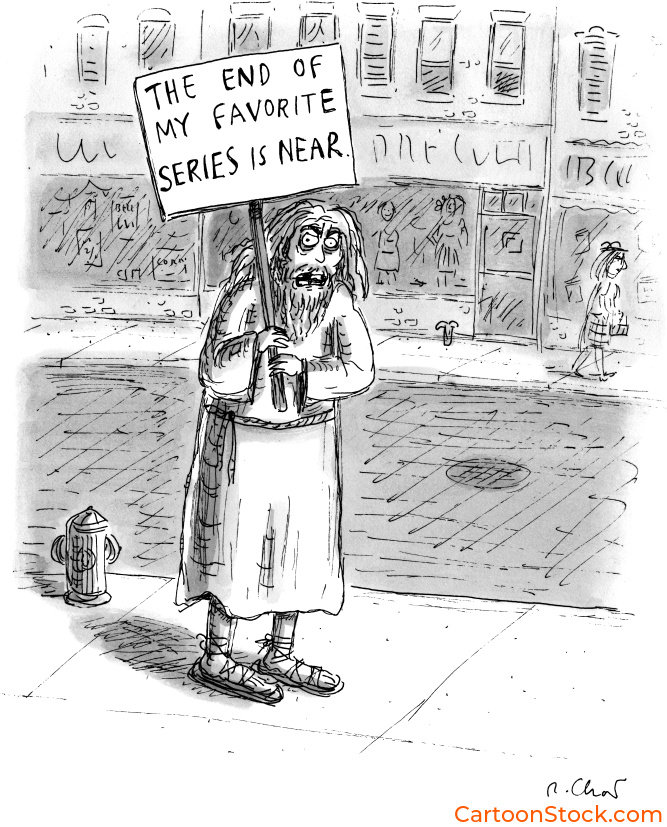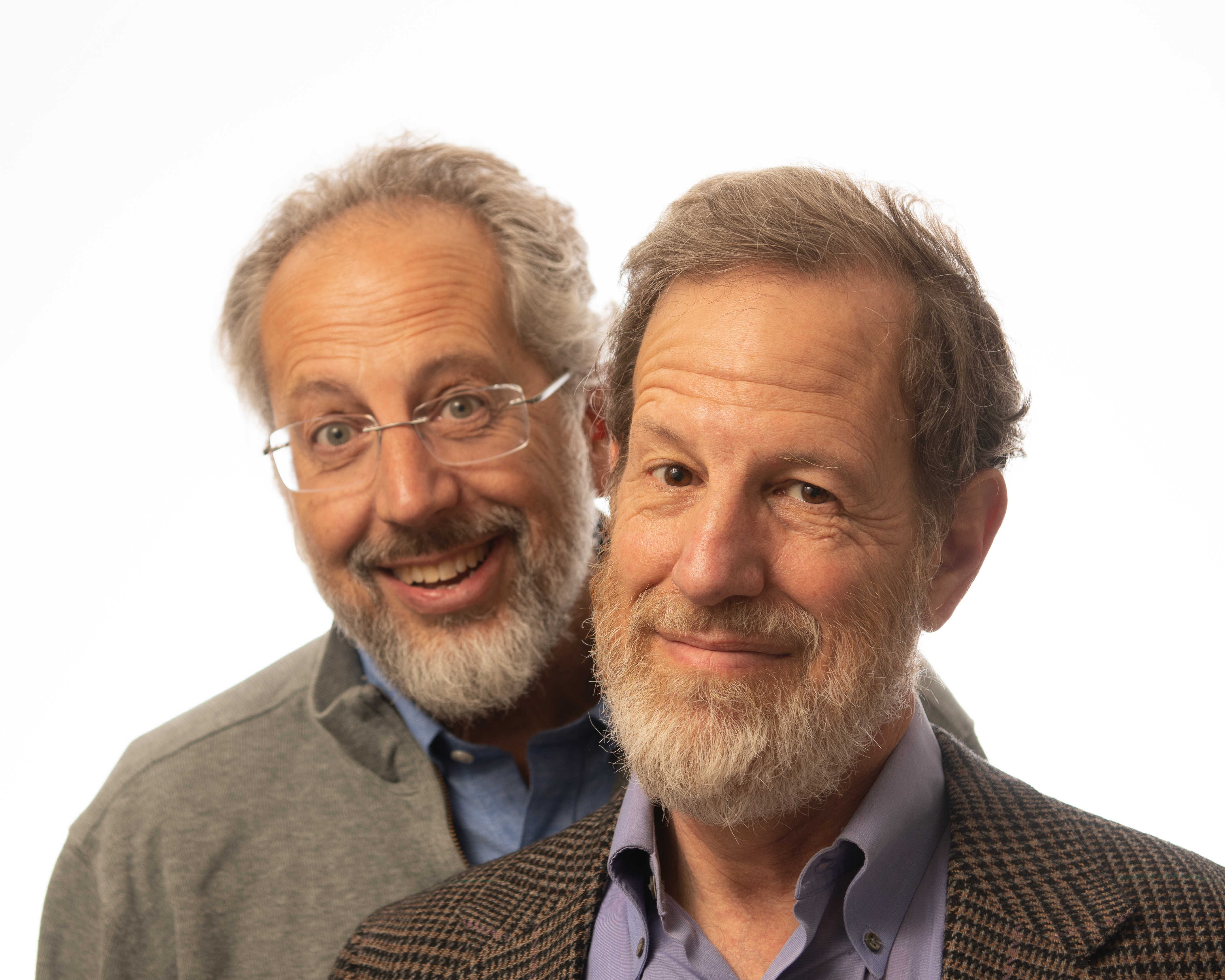
Cartoon critics Phil Witte and Rex Hesner look behind the gags to debate what makes a cartoon tick. This week our intrepid critics take a look at Television.
The news is coming thick and fast these days: congressional hearings, court decisions, armed conflicts. We get updates on our phone apps, but lots of content still comes from that venerable medium, television.
Few reading this blog will have grown up in a home without a television—whether a sleek flatscreen or an old-fashioned box with rabbit ears. Television, however, is no longer the single focus of a family’s entertainment. Our first cartoonist, William Haefeli, chronicles this phenomenon with his usual artistic flair. At least everyone looks happy.
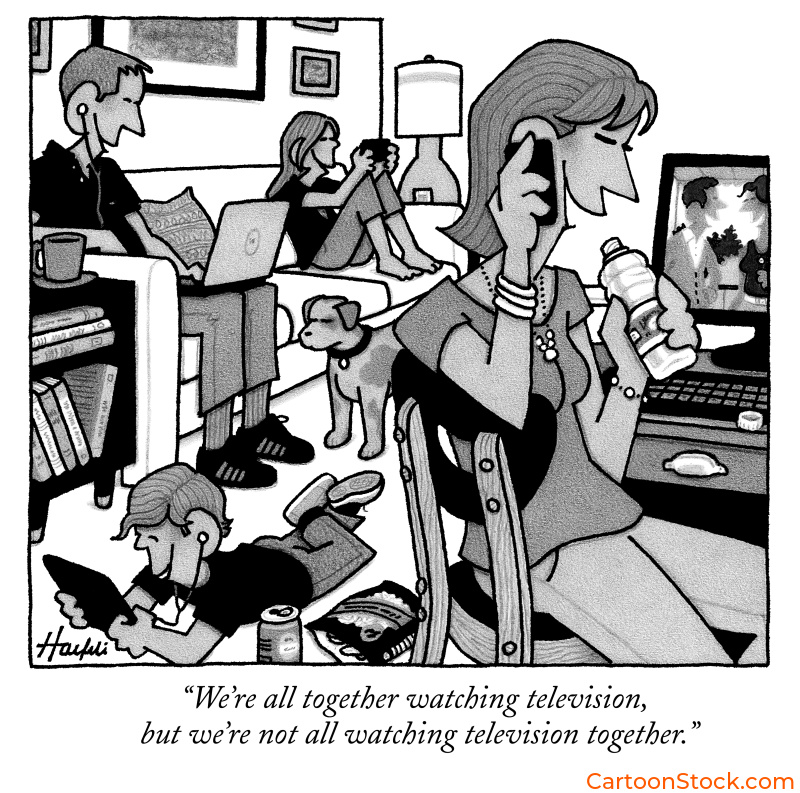
As restless teenagers, we mocked our parents for hunkering down for an evening of banal entertainment on TV. But it’s somehow different when we choose to do the same now that we’re adults. A carton of take-out, a bowl of popcorn, and assorted drinks provide the foreground context to Warren Miller’s stylish urban backdrop. It all suggests these city dwellers have plenty of entertainment options; they just don’t feel like going out tonight.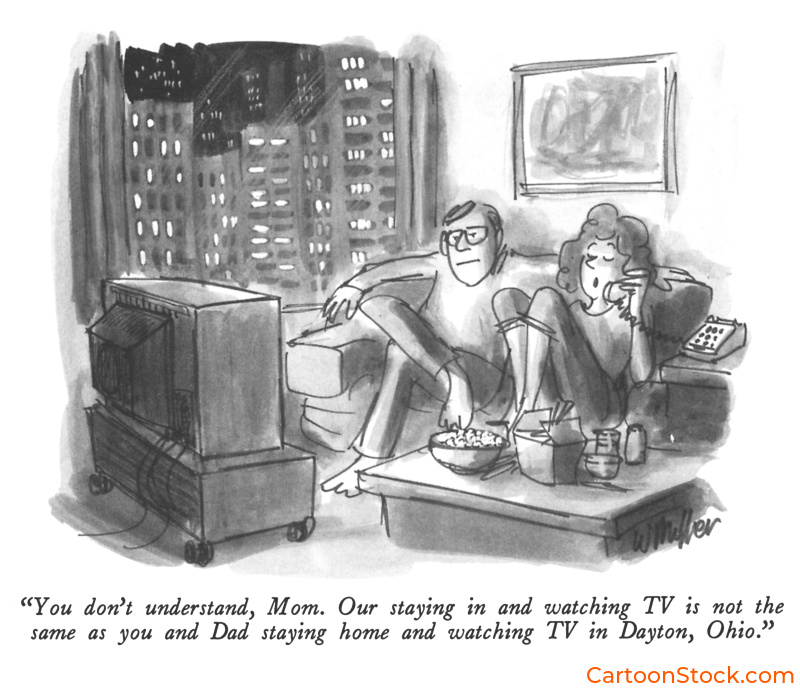
Like the seasons, television has its own peculiar rhythms. Among the most annoying are PBS’s periodic fund-raising drives. Though well-meaning, the entertainment value is often grating, as implied by Mick Stevens’ large-mouthed hostess on the screen. We might take his arch caption in different ways—all amusing.
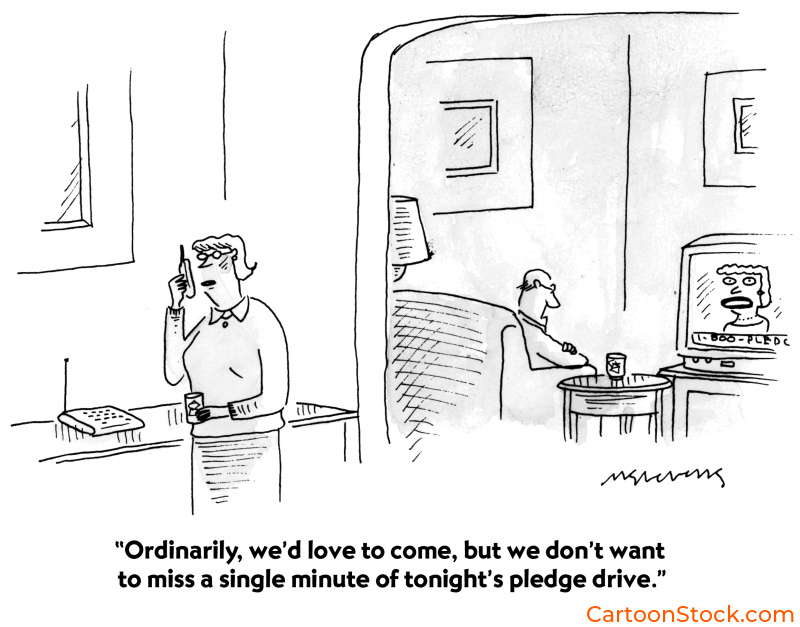
Cable channel news programs offer content for every quadrant of the political spectrum. The wild-eyed polemicists shown on opposing news programs speak to the widening political division in the nation. David Sipress thoughtfully includes a framed painting of a happy sailboat navigating smooth waters—a contrast to the roiling gulf between the couple glued to their respective commentators.
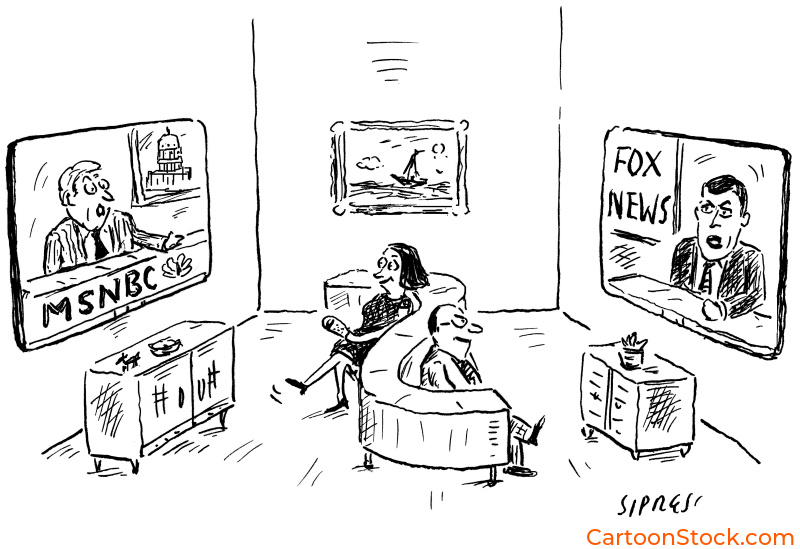
The television often dominates the room it occupies. The chairs in that room are typically oriented for optimal viewing, the tables for convenient snacking. The man stroking the leatherette sees a rosy future aboard his fantasy television chair. It’s worth a second look to note the diminutive size of the couple’s heads—a signature element of Julia Suit’s style.
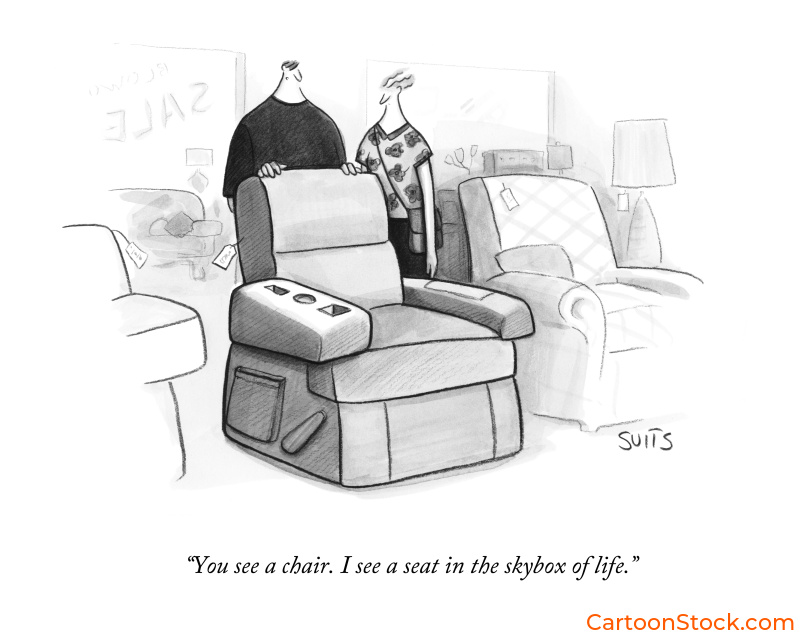
Some television enthusiasts want an entire home theater for their viewing pleasure. So they hire designers to breathe life into the dream with a wall-sized screen, red velvet seats, and a popcorn wagon. Cartoonist Liam Walsh employs his considerable illustration skills to bring a gritty authenticity to this vision.
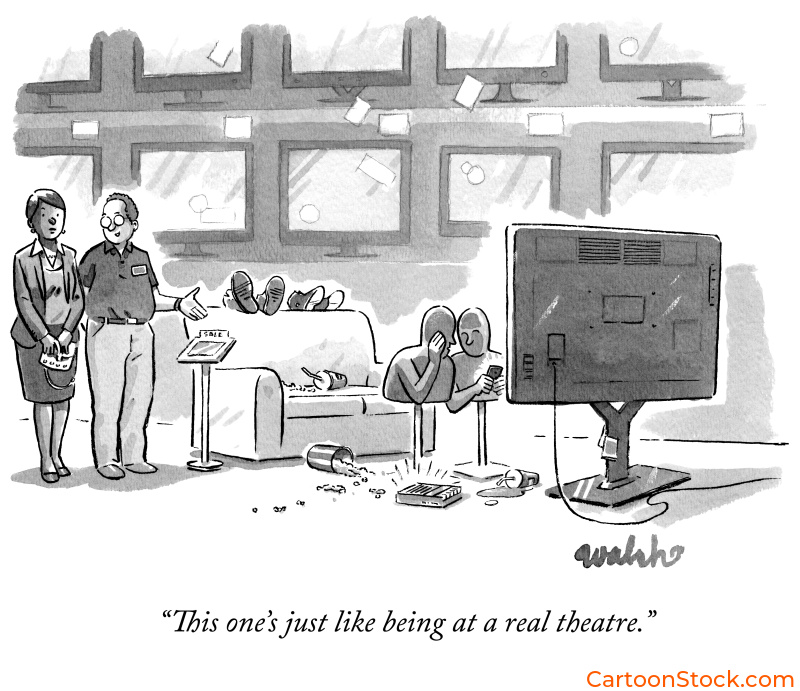
Though tensions may run high in a household, a truce is called when it’s time to watch a favorite TV program. Squabbles are laid aside for the moment as the opening credits roll. On occasion, as Sam Gross conjectures, the truce even holds between acrimonious species, though the show’s title may suggest risk.
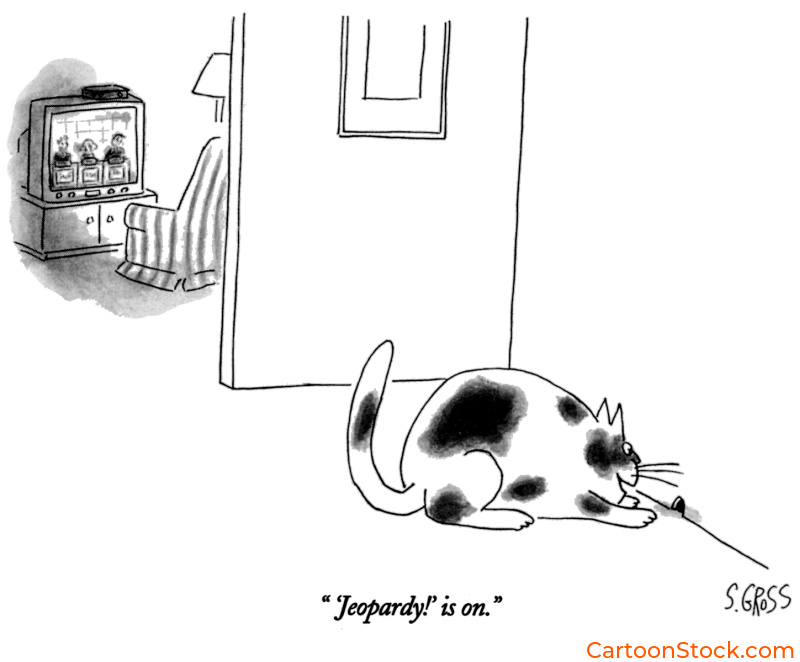
Most primetime television programs scrub their material of controversial topics and edgy content. On the other hand, commercials must reach their target audience with a clear selling message, regardless of the hour. Jack Ziegler presents the uncomfortable realities when Junior gets curious. Note that the caption is not phrased as a simple question, but instead as a more specific statement.
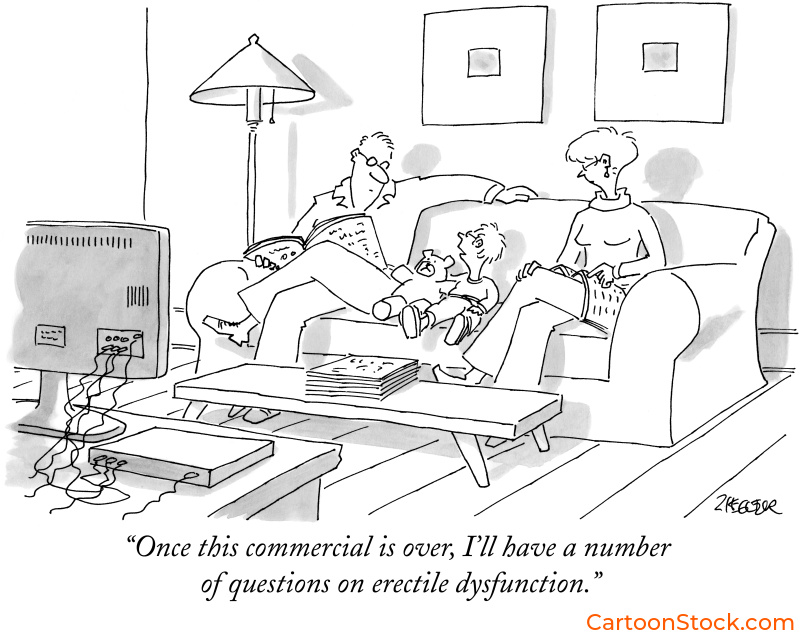
We derive vicarious pleasure from watching our favorite programs on television. In addition, we gain skills from watching DIY programs. Self-help from therapists is the latest panacea on the horizon: Bruce Kaplan shows us how to avoid exorbitant fees by watching people get help with problems like ours.
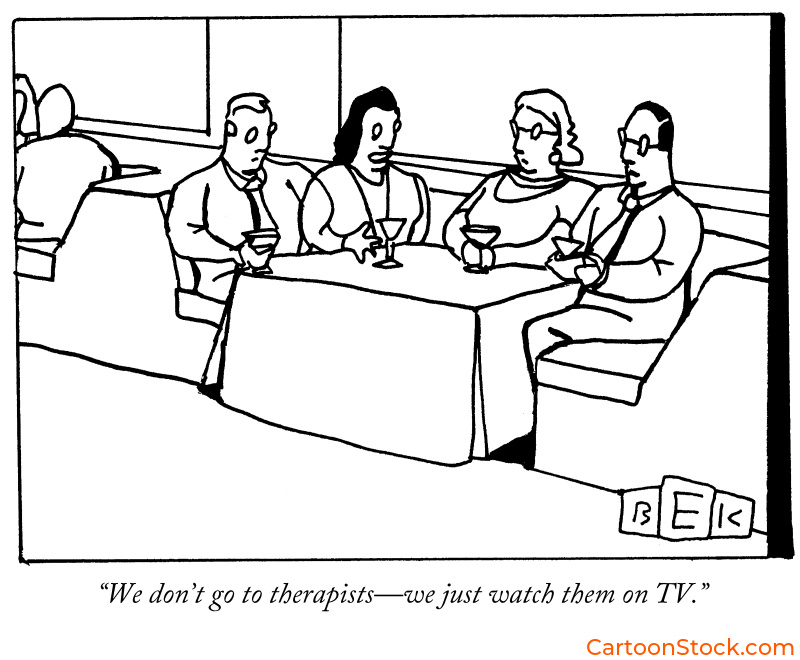
Man’s ability to focus on a televised sporting event is legendary. As proof, the only distractions acted upon are an empty beer can or a full bladder. Though this gag is a staple of comedic fodder, Harry Bliss teleports us back to the original garden—and we’re not talking about Madison Square Garden.
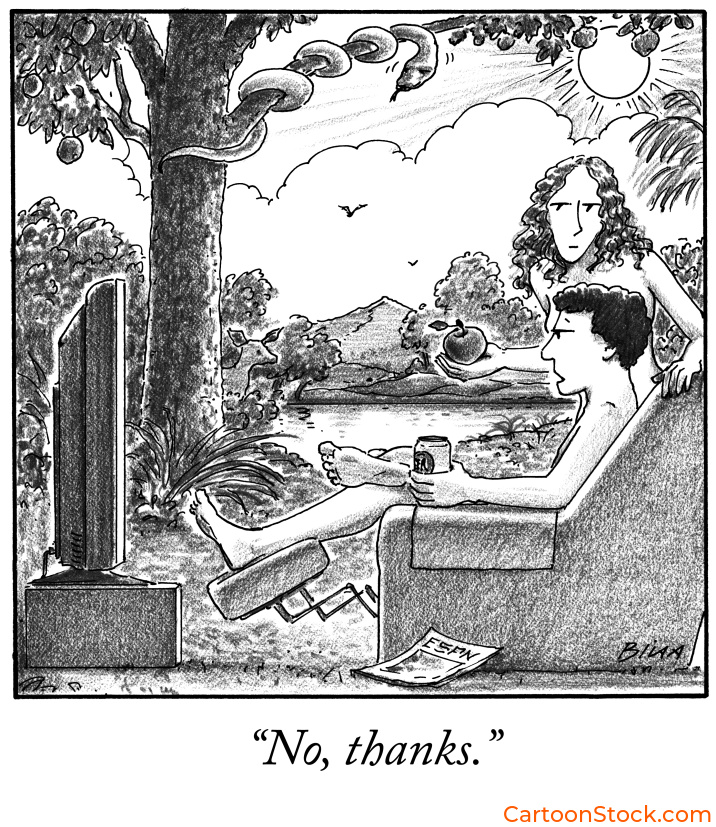
The dependence on electronic entertainment increased during the pandemic; we just couldn’t get out as often. New television series, especially the darker series on cable channels, created emotional bonds between the viewer and their beloved characters. Roz Chast, the doyenne of doomsday, resuscitates the end-is-near guy to ratchet our anxieties even higher.
